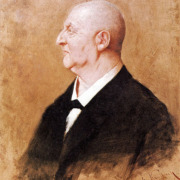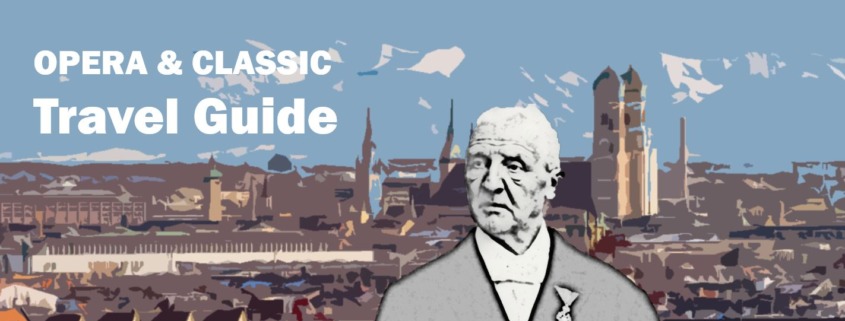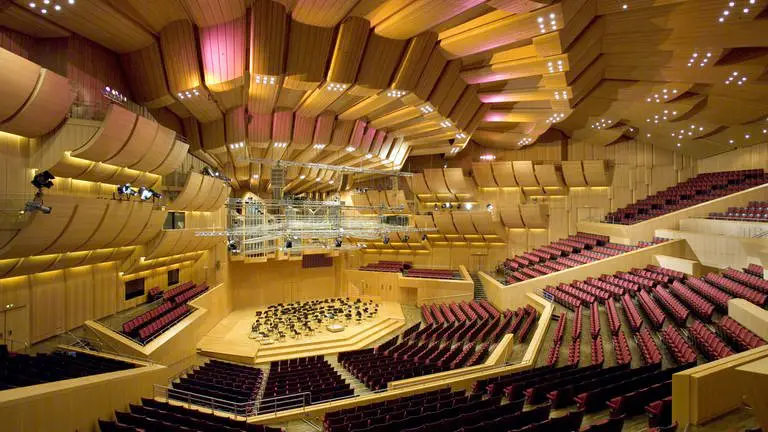Anton Bruckner in Munich
The series about historical places of opera art & culture. Get to know exciting excursion and travel ideas for opera lovers. This time: Anton Bruckner in Munich.
All Destinations on google maps with links to detailed Blogposts:
Anton Bruckner in Munich

Anton Bruckner, who was living in Vienna then, visited Munich eight times. It was in this city that he experienced one of the great moments of his life in 1885, when the munich orchestra Munich became the second city to perform his Seventh after its lukewarm reception in Leipzig, and it was received triumphantly by the audience. At the celebration the next day, the conductor Hermann Levi called it the most important symphony after Beethoven, which was, in Bruckner’s own words, one of the greatest satisfactions of his life for him, who was often offended and overawed.
During these days, Bruckner also sat with the painter von Kaulbach for the portrait, which Bruckner, however, did not consider to be very successful.
Another great day had occurred for Bruckner in Munich when he met his idol Richard Wagner for the first time in 1865 on the occasion of the first performances of “Tristan und Isolde”. Wagner later spoke of the great symphonist Bruckner, but maintained a somewhat condescending attitude toward the somewhat “doltish” Bruckner.
The last time Bruckner saw the revered master was at the Villa Wahnfried after the first performance of “Parsifal,” and he asked him “Well, Bruckner, what do you say to Parsifal?” Bruckner knelt down in front of him and stammered: «Meister, i bet Ihna an!» (Master, I adore you!)
TO THE COMPLETE BRUCKNER BIOGRAPHY
Destination Gasteig Concert hall
With the 7th Symphony, Munich established an important Bruckner tradition. First it was Hermann Levi, then Ferdinand Löwe, who led Bruckner’s work to flower. The tradition was passed on to the legendary Celibidache concerts in the Gasteig. Among others, the Gasteig opened in 1985 with Bruckner’s 5th. Ghergiev also maintains the Bruckner tradition in our days.
Gasteig Concert hall:
https://en.gasteig.de/the-gasteig/munich-philharmonic-orchestra.html
Musical background: Bruckner’s Adagio of the 7. Symphony
Bruckner began composing the Adagio a few weeks before Wagner’s death. He had still met him six months earlier in Bayreuth and apparently sensed the master’s imminent death, and the movement’s ending became funeral music for his revered idol. He used in this ending for the first time the so-called Wagner tubas, which Wagner had used for the first time in the so-called “Todesverkündigung” of the Walküre (more about that in this link).
Bruckner was composing the climax of the Adagio when he learned of Wagner’s passing. He composed the final section that follows in memory of his idol as a tranquil farewell with the voices of the Wagner tubas.
The climax of the Adagio involves one of the great performance issues of classical music, we speak of the ominous cymbal clash. At this passage, Bruckner was encouraged by friends to mark the climax with a large cymbal clash, and he reluctantly gave permission to the premiere conductor Nikisch Bruckner did. He later withdrew the cymbal clash and wrote “does not apply” in the score. In the present recording we hear this passage with cymbal clahs at 18.17.
Bruckner Adagio 7. Symphony – Karajan:





Leave a Reply
Want to join the discussion?Feel free to contribute!